Like many a photographer, I’ve accumulated a couple of drawers worth of cameras and lenses. In my case, reflecting the fact that I’ve owned a camera since 1963, when I was given a Kodak Brownie Fiesta for my 10th birthday, nearly all of these “excess” cameras are the kind that use film.
I’ve also sold a number of cameras over the years – a series of auto-focus Nikon film bodies when I finally went digital (F100, N80, N65, and then eventually bought a cherry F100 in Tokyo, and a low mileage N90s to use a camera bag full of sweet Nikkor glass); a lovely Zeiss Ikon Super Ikonta; an even more desirable Contax G2 with its holy trinity of Zeiss lenses; to name a few.
But I’ve always said the camera I’ll never sell is my Rolleiflex 2.8F, a white face model, with the Schneider Kreuznach Xenotar 80mm taking lens. It is a late model Rollei, built in the late 1970s a few years before Franke & Heidecke went belly up. It has an upgraded Maxwell bright screen installed by Rolleiflex repair guru Harry Fleenor, who also overhauled the camera. I wrote about using this camera for photographing a jazz ensemble rehearsal here.
The five photographs here illustrate why I love this camera. This black and white portrait of my friend Milañ was made in 2019 as part of an ongoing project in the Marshall Islands.
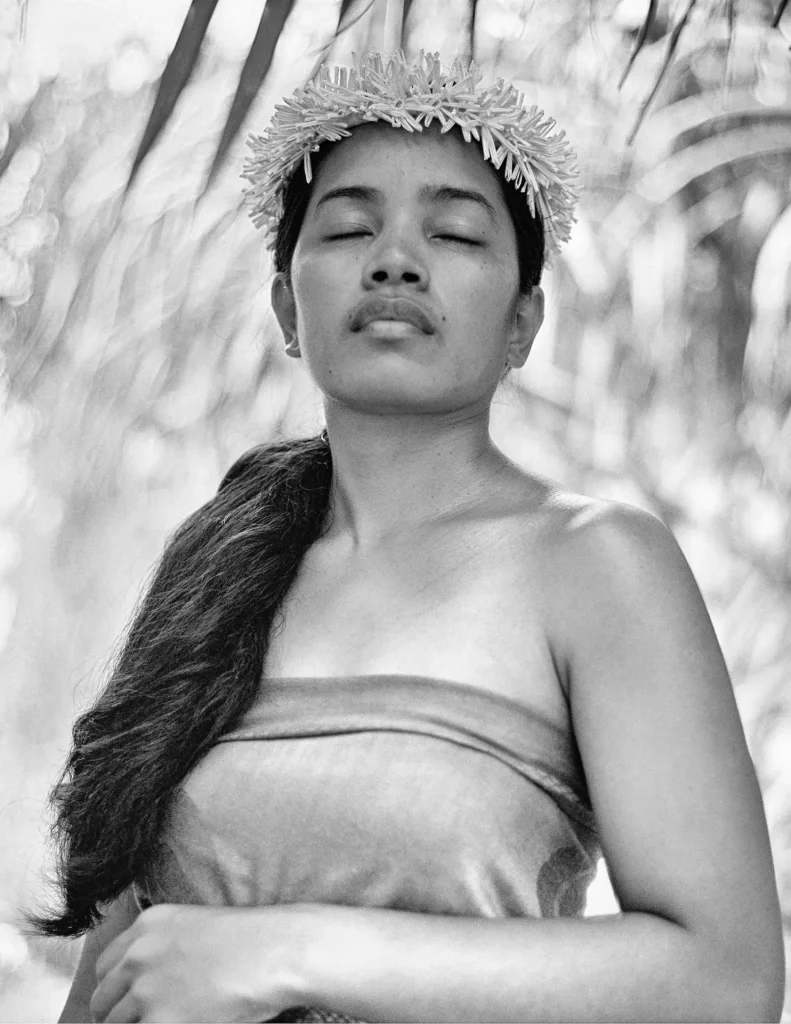
This color portrait of Milañ was made during the same shoot on Eneko Island in Majuro Atoll with my digital kit (an Olympus OMD EM5, the original camera) with an Olympus 45mm F1.8 lens (a 90mm full frame equivalent). I love both photographs and both cameras, but when the images are printed even at 11 x 14, the Rollei print has something extra, a more organic look that is both sharp but not clinical.
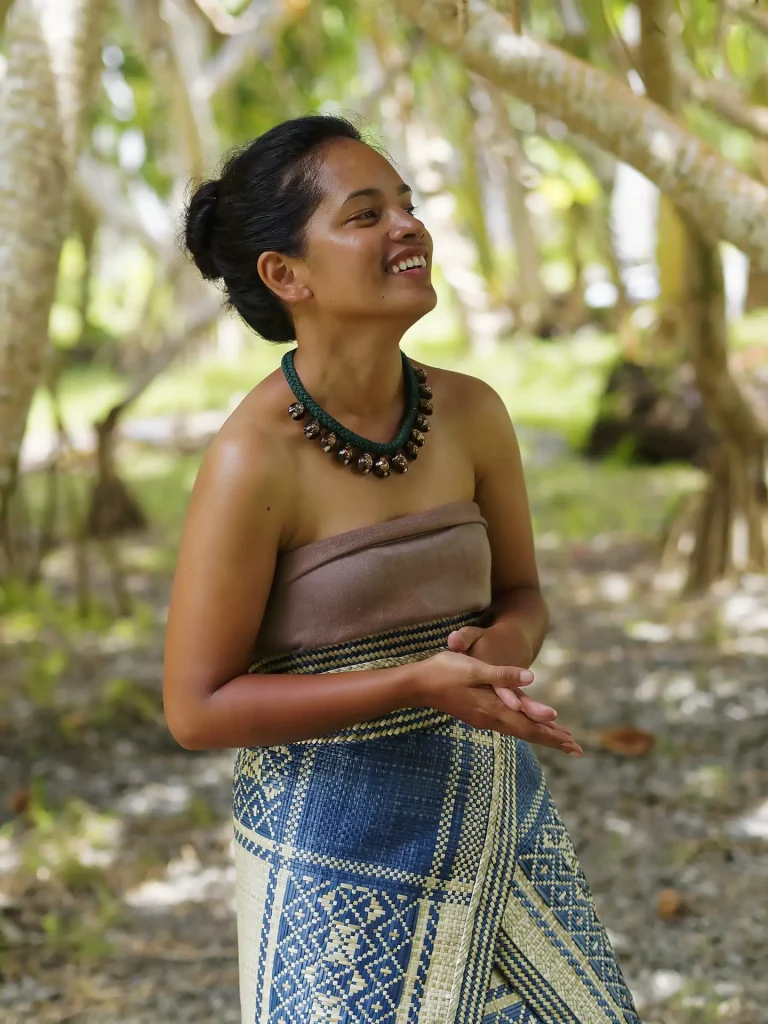
The photograph of the bamboo grove has been a long-time favorite of mine. It captures both the tensile strength of bamboo as well as its graceful form. Unlike the black and white portrait of Milañ, which was shot on FujiFilm Pro 400H and converted with software, this image was captured on Kodak Tri-X. The Xenotar taking lens has more than enough contrast for black and white shooting, and its modern coatings handle color with ease.
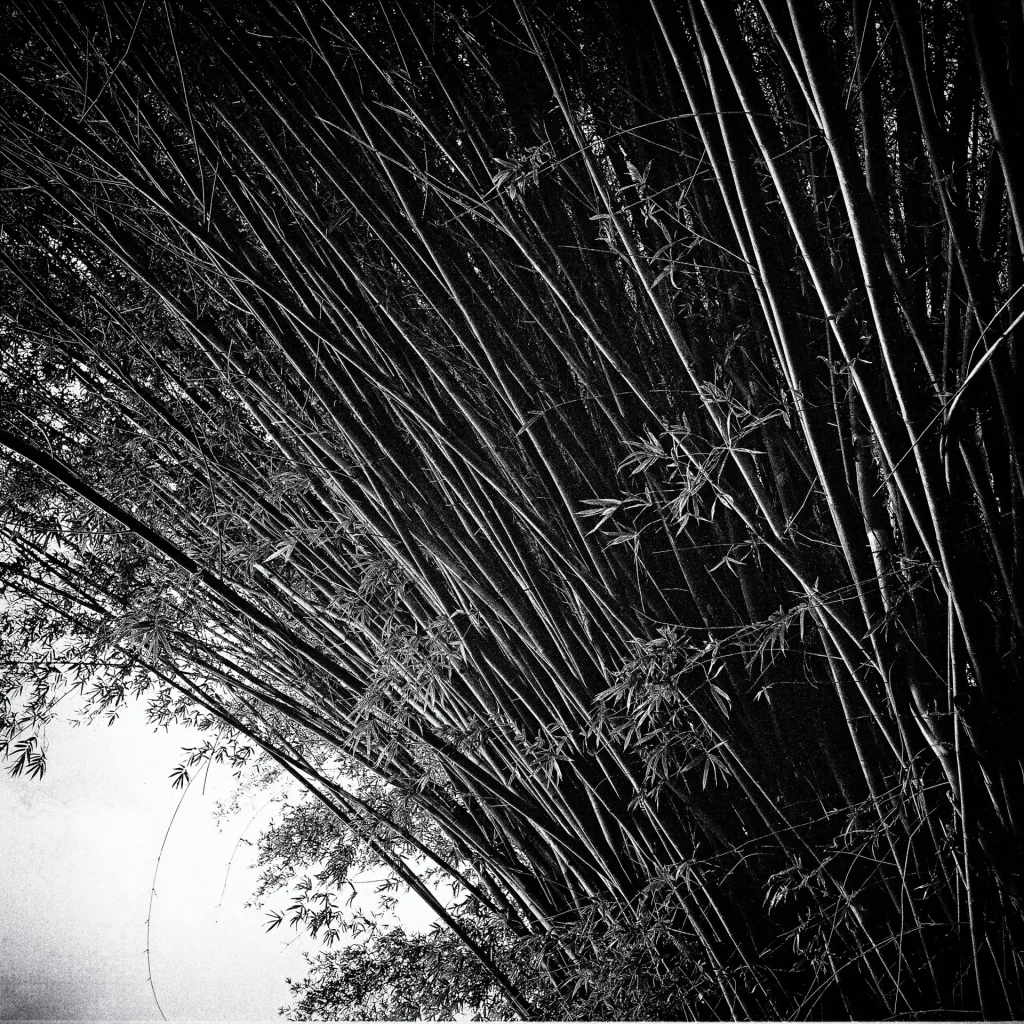
The final two photos were shot from about the same location – in one case, facing mauka, or toward the Koolau mountain range on Oahu, Hawaii. I spun around and facing the ocean, or makai, as we call it, I photographed Mokoli`i island offshore of Kualoa Beach Park. I envisioned these as being part of a diptych called, appropriately enough, Mauka-Makai.
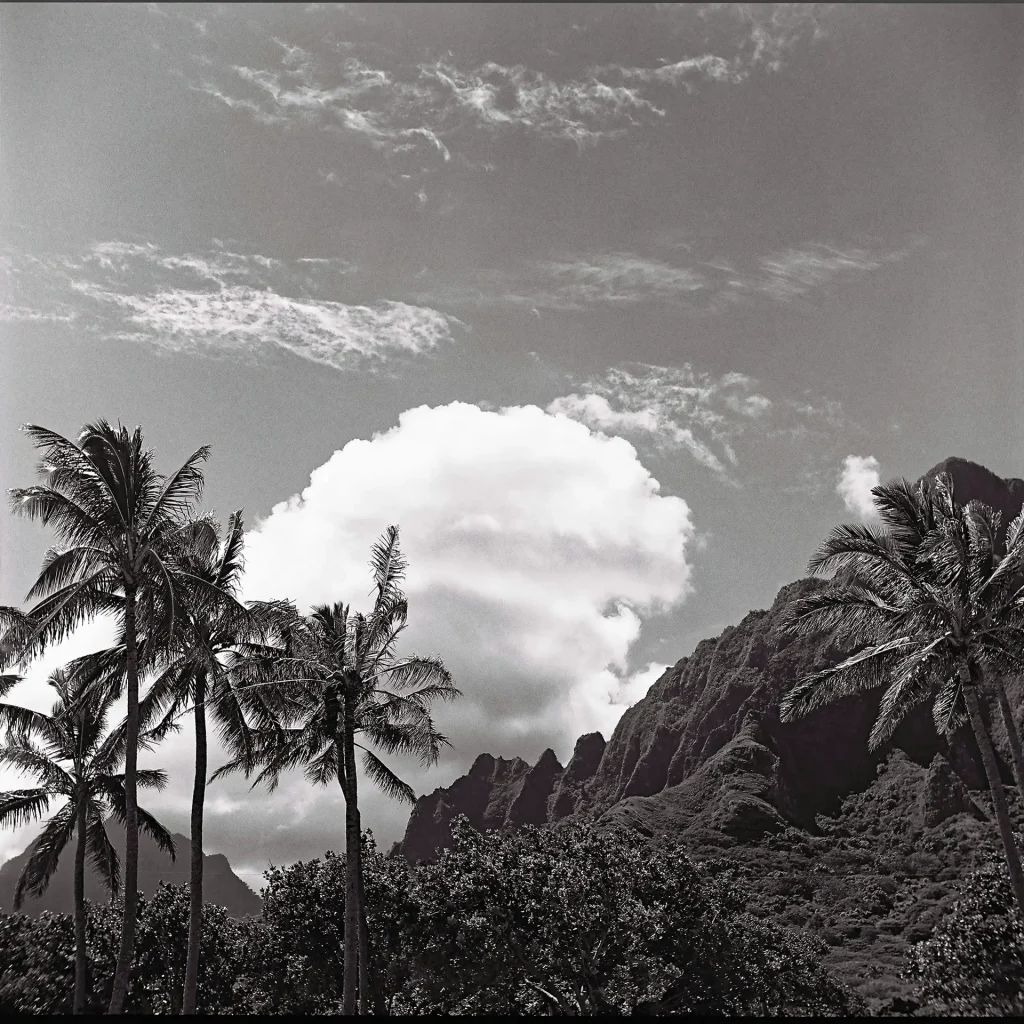
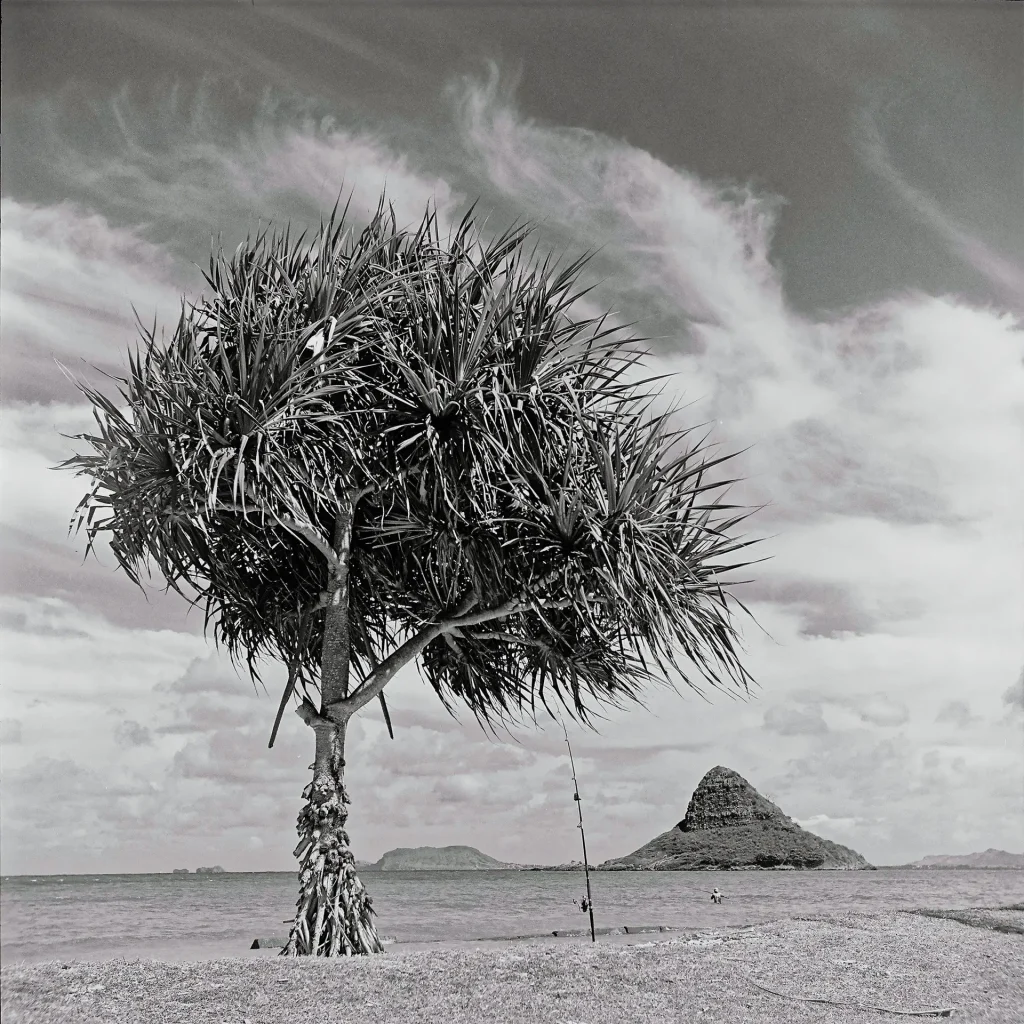
Of course, a few photographs don’t make a career. Nor do they define one’s style or approach to photography. But the do indicate a level of comfort with a camera’s strengths, and some knowledge of how to work around a camera’s inevitable weaknesses, of which the Rolleiflex has in spades.
The most obvious of the camera’s shortcomings are using a viewfinder that flips left and right. Many Rolleiflex cameras have dim viewfinders, a problem that can be remedied by installing a bright screen. A shutter that tops out at 1/500 of a second can be a challenge to photographers who are used to shooting at 1/4000 of a second and getting creamy out of focus areas. But like most of the Rolleiflex’s problems, the slow top shutter speed is indicative of a leaf shutter, which can be used at any speed with a flash.
If you’re interested in picking up a Rolleiflex, be prepared to pay for a clean, serviced camera (and a service from a recognized repair specialist). Good condition Rolleiflex 28Fs will likely cost between $2,500 and $3,000. A full-body service by Harry Fleenor will cost a minimum of $700.
Are they worth the investment? I think the answer to that question is yes, if you want a camera that will (with care) be your partner for the long haul, and reward a mastery of technical photographic skill with images of exquisite detail and resolution.
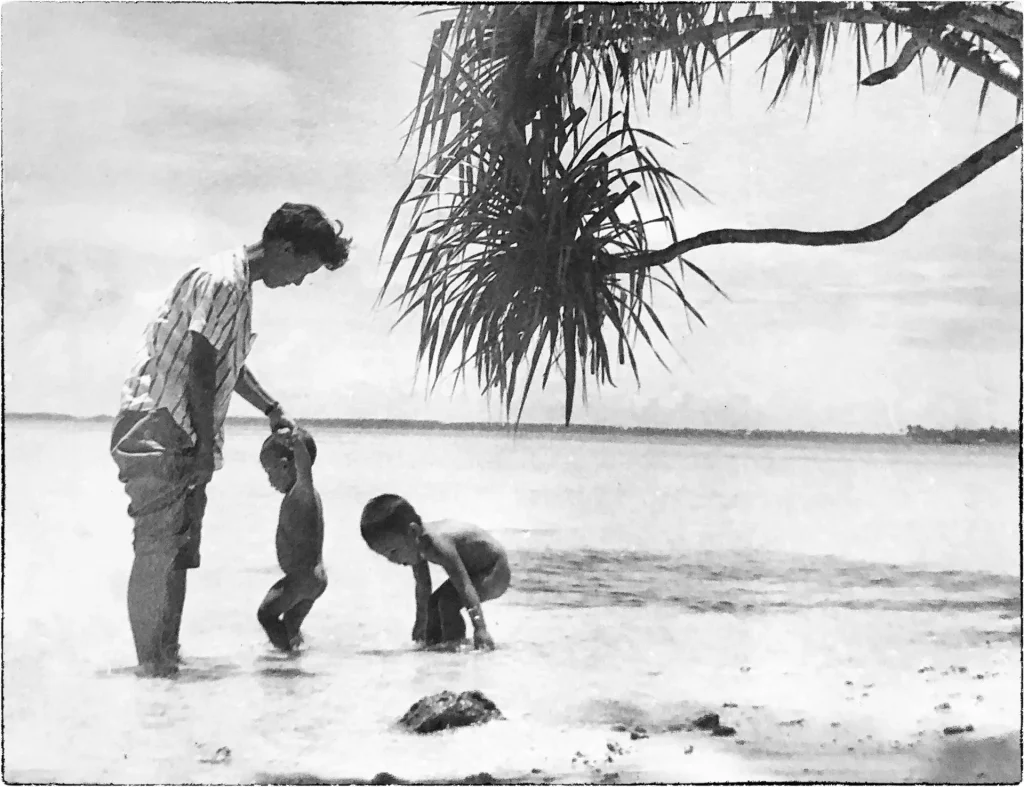
My father made this photograph, likely in 1958, on Majuro Atoll in the Marshall Islands. It’s me in the photograph, along with my younger brother and mother. It was taken with the Rolleiflex sat next to mine in the image at the top of the article.
Share this post:
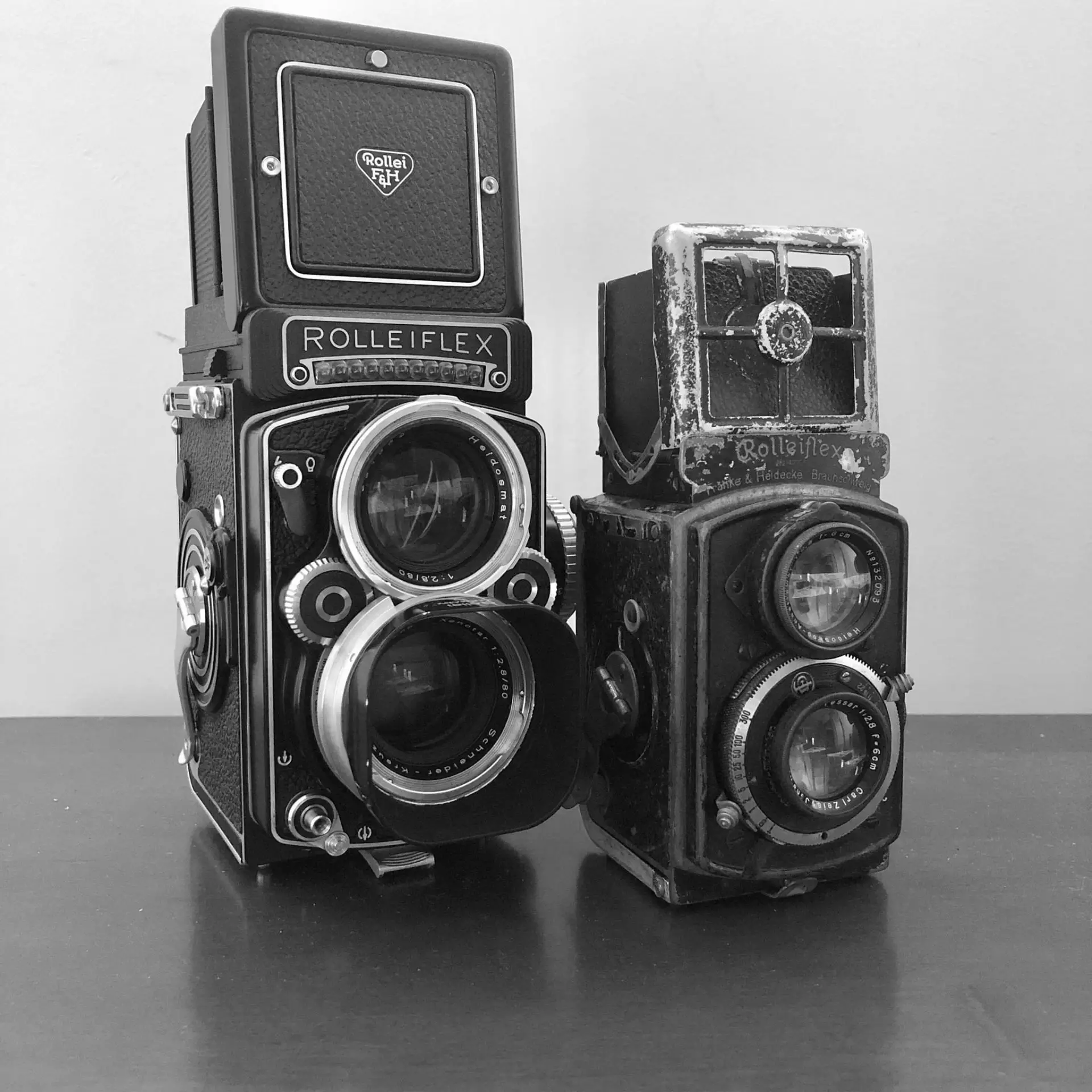








Comments
Michael J on 5 Frames with a Rolleiflex 2.8F – A Lifetime Partner – By Floyd Takeuchi
Comment posted: 28/08/2021
I think a point worth making is that some of the other models of Rolleiflex can be acquired (and serviced) for considerably less money than these, the most desirable ones, and folks should be encouraged to use them, because they're awesome too!
John Davidson on 5 Frames with a Rolleiflex 2.8F – A Lifetime Partner – By Floyd Takeuchi
Comment posted: 28/08/2021
Kodachromeguy on 5 Frames with a Rolleiflex 2.8F – A Lifetime Partner – By Floyd Takeuchi
Comment posted: 28/08/2021
Comment posted: 28/08/2021
brad s sprinkle on 5 Frames with a Rolleiflex 2.8F – A Lifetime Partner – By Floyd Takeuchi
Comment posted: 28/08/2021
Yes, Harry is the go to guy. He's done a CLA on several of my Rollei's and they function beautifully.
Comment posted: 28/08/2021
Comment posted: 28/08/2021
Comment posted: 28/08/2021
Fred on 5 Frames with a Rolleiflex 2.8F – A Lifetime Partner – By Floyd Takeuchi
Comment posted: 28/08/2021
Now I want to get a 120mm camera.
Nick Clark on 5 Frames with a Rolleiflex 2.8F – A Lifetime Partner – By Floyd Takeuchi
Comment posted: 29/08/2021
As others have pointed out, there's far cheaper ways to get into the Rollei world than a white-face 2.8F and a Fleenor service. I picked up my single-owner 2.8D Planar for $900aud, and spent another $300aud on a full overhaul from a very experienced Australian tech. The camera is well used, well loved and works like an absolute charm.
davesurrey on 5 Frames with a Rolleiflex 2.8F – A Lifetime Partner – By Floyd Takeuchi
Comment posted: 29/08/2021
Thanks for an interesting read and some lovely, well crafted images.
That you have the very same camera that took that beach shot of you many years ago must be something very special for you.
I have no doubt that a 2.8F is a wonderful camera to use but it does come at a price which may not be acceptable for many who wish to delve into TLR photography.
Personally my collection now includes a Yashica Mat and until, or if, I find it is limiting my creativity or the quality of the images that I find acceptable I will be happy to stay with it.
But I do agree that there is something special about shooting with a TLR.
Comment posted: 29/08/2021
davesurrey on 5 Frames with a Rolleiflex 2.8F – A Lifetime Partner – By Floyd Takeuchi
Comment posted: 29/08/2021
No, I didn't think you were knocking any other TLR brands. Sorry if I gave you that impression.
I was just trying to say that for those who might be interested in starting down the TLR road there are many alternative ,much cheaper, models.